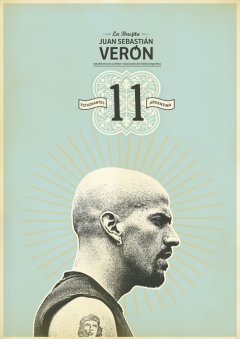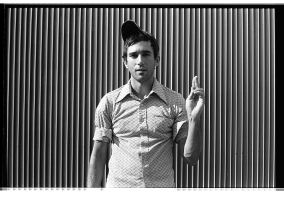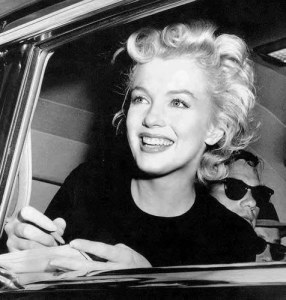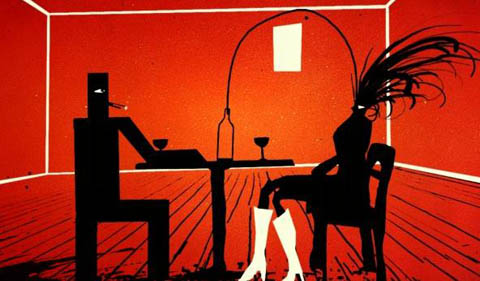As everyone knows Facebook is virtually in everything these days, even making it’s way into college admissions. In fact 80% of America’s top colleges are using social media as a form of recruitment. No longer is it simply the achievements you have received in high school that are looked at by colleges, but your Facebook profile is as well. Universities state that the Facebook profile is in a medium to high range of priority in evaluating a candidate for their school.
Internet Vices
18 JulAndrea vascellari, ceo von ivite, hat sich mal ein paar gedanken über unsere internet-laster gemacht und die youtube’s, tumblr’s, facebook’s etc. dieser welt, auf denen wir uns mittlerweile täglich stundenlang tummeln in illustrationen festgehalten, indenen er deren wirkung auf/mit uns mit drogen vergleicht…natürlich mit einem augenzwinkern, jedoch nicht ganz ohne ein fünkchen wahrheit…








A World Without Facebook
30 JunEveryone already knows what Facebook is and it requires no introduction. Facebook has created a platform in which we interact with each other without ever having to meet face to face. It allows for businesses to take off without ever having to spend a dime on advertisement; local business now has a voice against the big companies. Facebook has helped level the playing field, everyone and everything can have an internet presence. With their social plug-ins Facebook makes it easy for anyone with a site to gain fans and have their fans share the site with their friends. However, what would life be like without Facebook?
As you may have already guessed today’s infographic is all about the world without Facebook. As previously mentioned local businesses use Facebook for marketing, 70% to be exact. That would mean that over half of of local business would lose access to thousands of potential customers. Today if we want to share a picture we simply upload it to Facebook and anyone we want can see it. If it weren’t for this we would have to wait for people sign into IM, e-mail the photo, or wait until we see them next. What about arranging get togethers? We would have to send out e-vites, mail out invitations, or make tons of calls. Luckily today all we have to do is create an event and add whoever we want to the list.
Your Professor Tweets More Than You
30 JunHow many of y’all are friends with your professors on facebook? I have friended a couple of my past teachers, but not very many. I feel that the learning community didn’t really know to jump into the social media wave, but they ultimately went for it. Over 90% of college faculty engages with social media compared to less than 50% of other professionals. Those in higher education seem to care less if students know about their real life as to someone with a business client.
I’ve heard that employers and universities will look up applicants on facebook or twitter to see what they are like when they aren’t in an interview. As much as it is creepy, sometimes having a company see that you will fit its culture from your twitter is a good thing.
In my opinion professionals will gradually enter the social media world. Most start-ups and technology companies encourage their employees to have a twitter. This way customers believe they are creating a relationship with the companies through social media outlets. All organizations know the key to repeat customers is post-purchase interaction.
Social networking ‘utopia’ isn’t coming
29 Jun
(CNN) — As 2011 dawned, Facebook released a map that spoke to our era of social media in much the same way the first pictures of Earth from space spoke to the 1960s.
The map showed the connections between the world’s Facebook friends — a number now approaching 700 million — as beams of light. Gossamer-thin threads linked every major city on the planet. The cities shone like stars.
No one has done this, but just think what that map would look like if you were to add Twitter users, whose numbers last month surpassed 300 million.
A grand total of 1 billion accounts, and who knows how many billions of connections? (Facebook friends max out at 5,000, but there’s no limit to the number of people who can follow you on Twitter.)
Then consider that all these threads connected in the last five years. And that at the rate of growth both services are enjoying, the connecting party is just getting started.
You might be forgiven for looking at this imaginary map and thinking some very 1960s-style thoughts — that we are forging some kind of global consciousness where everyone will end up friending and following everyone else, right?
Not so fast, man.
A study released this month shows that digital tribalism is alive and well in the social network era. The tribes I’m talking about aren’t nations, corporations or sports teams, though clearly these brands all matter as much as they ever did.
I’m talking literally about tribes — as in the kind of village-sized small groups most of us lived among for nearly all of human history, right up until the 20th century. Small groups that we now seem to be organizing ourselves into again — virtually.
Scientists at Indiana University collected the conversations of 1.7 million Twitter users over six months, a total of 380 million tweets.
What they wanted to know was this: How many real connections do Twitter users have? Not just silent following, not retweeting, not a stray @ message to someone, but a real back-and-forth conversation. How many people can you maintain that kind of contact with online before you get overwhelmed?
The answer, on average, was roughly 150.
If you read Malcolm Gladwell’s best-seller “The Tipping Point,” you probably remember the importance of 150. It’s Dunbar’s number, so named for an anthropologist who predicted the size of the “tribe” we can comfortably handle, based on the size of our brain compared to that of other primates and the average size of their groups.
Turns out we’re hardwired to get along best in tight groups of no more than 150, and have been since we were living on the African savannah. Armies take advantage of this hardwiring, as do the smartest corporations, not to mention wedding planners.
Even if you’re a gregarious soul, Gladwell suggested you list how many people you would actually stop and have a catch-up conversation with if you bumped into them on the street. I might add: How many of those Facebook acquaintances of yours truly deserve the title “friend”?
If social networking were changing our brains’ wiring, then, yes, maybe we would one day live in some utopian world where technology connected everyone in a meaningful friendship. But the Indiana study doesn’t hold out any hope that this will ever happen.
The authors explain it this way: Calculators are great tools, but they don’t turn us into math geniuses. They don’t expand our brain’s natural limits. Neither do Facebook or Twitter.
And maybe this is no bad thing. What social media gives us, for the first time, is the chance to choose our own group of 150.
Instead of being lumped with the village we happened to be born in, as happened for most of history, we each get to construct a virtual village that suits us — cobbled together from family, old friends, our best co-workers and mentors, and that like-minded spirit you met on vacation one time.
The key is to keep it small. For example, a popular iPhone photo sharing app, Path, limits your network to just 50 people.
I predict big things for the first social service to make sure you max out at 150 friends or followers, making the resulting interaction all the more worthwhile.
Perhaps only when we are in such networks can we construct a meaningful map of the world.
*Editor’s note: Chris Taylor is San Francisco bureau chief of Mashable, a popular tech news blog and a CNN.com content partner.
Source: cnn.com
Facebook Tattoo Video Was Just A Fantastic Viral Marketing Hoax
29 Jun
This is just awesome. The Facebook tattoo video, which I wrote about here yesterday as part of a “videos that become news” article, turns out to be an elaborate fake. A viral marketing video. It’s nothing but a hoax. And what a wonderful hoax it was–and successful! The video has 1.6 million views as of this writing, and it’s barely a week old.
The Facebook Tattoo Video Hoax
It’s been revealed that the tattoo wasn’t actually permanent, but rather it was some kind of temporary thing that disappears after a few days–no doubt it’s already gone. The tattoo artist, Dex Moelker, will surely get a higher profile from this whole thing, though I have so little knowledge of that industry that I can’t say how much it will mean to her in terms of profit or new customers.
No, the real “advertiser” here is Pretty Social. Who’s that, you ask? Well, they’re a company that lets you buy gifts and trinkets printed with… wait for it… your Facebook friends’ faces. In the original video, the company is specifically thanked, and they’re listed as the “tattoo designer” in the video’s description.
Here’s the original clip in case you missed it:
Why Did The Hoax Work?
Viral hoax videos work best when they are squarely on the line between being incredible and being hard to believe. On the one hand, most viewers were critical of the girl, having a hard time understanding why anyone would get such a silly tattoo–and such a big one, covering the entire arm. On the other hand, the clip is completely believable, because honestly… people tattoo unthinkably weird crap on their bodies every day.
Have you ever seen one of those tattoo-parlor reality shows on cable? Watch just one episode and you’ll realize that there’s very little limit to what some people are willing to permanently ink on their bodies. There are entire Tumblr sites devoted to photos of ridiculous tattoos. So ultimately, even though viewers largely thought this woman was crazy, they didn’t have any trouble buying the fact that the tattoo was real.
Over the past few days, the video has received hundreds and hundreds of mentions on mainstream news sites, blogs, and everything in between. It fooled nearly everyone, and it did so because it was a perfectly executed concept intended to be believable and unbelievable all at the same time. In the end, for relatively little cost, Pretty Social was able to use an extreme example to demonstrate their service, and got it in front of the eyes of millions. That kind of thing could put a business on the map, no?
How Movie Marketers Are Innovating On Facebook
28 Jun Early on in Facebook marketing history, movies had a minimal presence on the platform. Usually, film pages listed rudimentary information. Sometimes a marketer would create pages for individual characters in a movie, but that’s about as innovative as it got.
Early on in Facebook marketing history, movies had a minimal presence on the platform. Usually, film pages listed rudimentary information. Sometimes a marketer would create pages for individual characters in a movie, but that’s about as innovative as it got.
Since then, however, the platform has grown into an important tool for connecting with movie fans before and after a premiere.
“Now when we market on Facebook, it’s a full relationship with the fan group,” says Relativity Media president of marketing Terry Curtin. “If you think about the way that movie marketing has worked, for years and years and years we’ve had an indirect relationship with our audience. We sell our tickets through a third party, we advertise through a third party. So this is the first time that we have a direct interface.”
Movie studios use Facebook Pages to listen to movie fans, engage superfans who crave more information than can be crammed into trailers and spread the word about a movie in an organic way.
In the process, many have expanded well beyond a Facebook wall — they’re transformed Facebook into a movie-viewing experience for the fans who want that. Here are some examples of how the makers of a handful of recent and upcoming movies are using the platform.
See for example: Cars 2 on facebook.
Skype Adds More Facebook Features
23 Jun Skype‘s beta version 5.5 of its desktop software for Windows adds even more Facebook extras to its already deep integration with the social network.
Skype‘s beta version 5.5 of its desktop software for Windows adds even more Facebook extras to its already deep integration with the social network.
In the new version, out Monday, Skype for Windows users can instant message their Facebook friends via Skype, “like” and comment on friends’ Facebook status updates without logging into Facebook and view all their Facebook contacts in a new Facebook-dedicated contacts tab.
Skype for Windows 5.5 beta also includes a redesigned call control toolbar and other visual call-related adjustments.
Previously, Skype for Windows users could view their Facebook news feeds from within the application and place Skype calls or send SMS messages to their Facebook friends, if friends included their phone number in their Facebook profile.
The latest infusion of Facebook functionality further cements the connection between the two applications and makes cross-platform messaging more seamless.
Skype was acquired by Microsoft for $8.5 billion in May. The deal was approved by the Federal Trade Commission June 17.
The Reality Behind Social Location Apps
22 JunDigital services company Beyond compiled the results of their research into location-based apps, and designed this infographic summarizing the results; Check-In Data: The Reality Behind the Hype. Released in conjuction with the Social-Loco conference in San Francisco, CA on May 5th.
As part of our involvement in the Social-Loco conference we have done some research to try to understand the difference between what people are saying online compared to the actions of early adopters and the views of the rest of the US population when it comes to their mobile check-in habits.
The results give us a clear understanding of who the winners and losers are likely to be, as well as the types of things that will motivate the mass consumer to adopt location-based apps. They also highlight some of the real challenges there are to consumers embracing this technology.
The data is very interesting. Personally, I continue to use Foursquare, but find myself checking in less and less because I don’t get any direct benefits out of it.
From a design standpoint, I like the circle clusters, but I don’t like data separate in a legend on the side. I appreciate that the color-coding remains the same, so Twitter is the same color in each visualization. I would have included the logo images for the social location-based apps, and connected the data directly to the circles. Data legends like this make your readers work harder to understand the information.
I also think that the most interesting learning from the study is the comparison between how people interact with national brands and small, local businesses. However, this is the last visualization at the bottom, and gets lost.





















